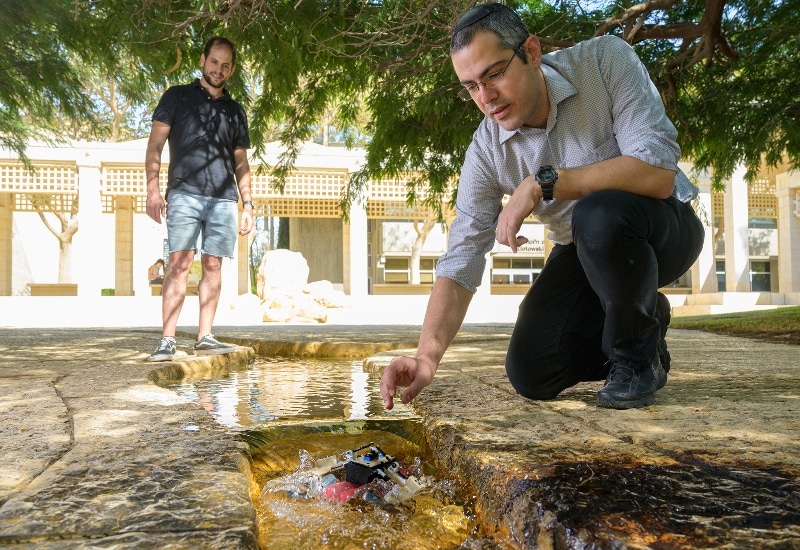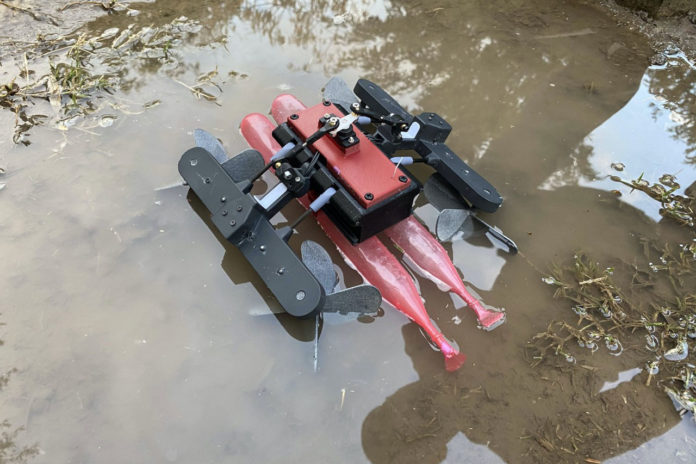Ben-Gurion University of the Negev (BGU) researchers have developed a new high-speed amphibious robot inspired by the movements of cockroaches and basilisk lizards. Called AmphiSTAR, the robot can swim and run across the surface of the water at high speeds and crawl on difficult terrain.
The palm-sized AmphiSTAR, which belongs to the family of STAR robots developed in the laboratory, is a wheeled robot fitted with four propellers underneath whose axes can be tilted using the sprawl mechanism. Two gas tanks allow it to float and help to smoothly switch between high-speed hovering over the water to lower speeds swimming, and from crawling to swimming and vice versa.

The robot can crawl over different surfaces such as gravel, mud, dirt, grass, and concrete as fast as the original STAR robot and can attain speeds of 3.6 m/s (3.3 mph). The propellers act as wheels over the ground and as fins to propel the robot over water while swimming and running on the water at high speeds of 1.5 m/s. Its current size is 20cm, but the models show that it can be built in different sizes without affecting its performance.
The AmphiSTAR robot is designed, among other things, to be used for agricultural, search and rescue, and excavation applications, where both crawling and swimming are required, said Dr. David Zarrouk, director, Bioinspired and Medical Robotics Laboratory in BGU’s Department of Mechanical Engineering in a statement.
“Our future research will focus on the scalability of the robot and on underwater swimming,” Zarrouk says.
Similar to AmphiSTAR, experts from Ben-Gurion University, Israel announced a new hybrid unmanned aerial vehicle system, whose full name is FSTAR (Flying Sprawl-Tuned Autonomous Robot). FSTAR attracts attention thanks to the four propeller sets that assist in moving in the air. However, when needed, the system can be adjusted by tilting the four rotors to 55 degrees, allowing the robot to transform into a mini car that can move on the ground at a speed of about 2.6 m/s.
